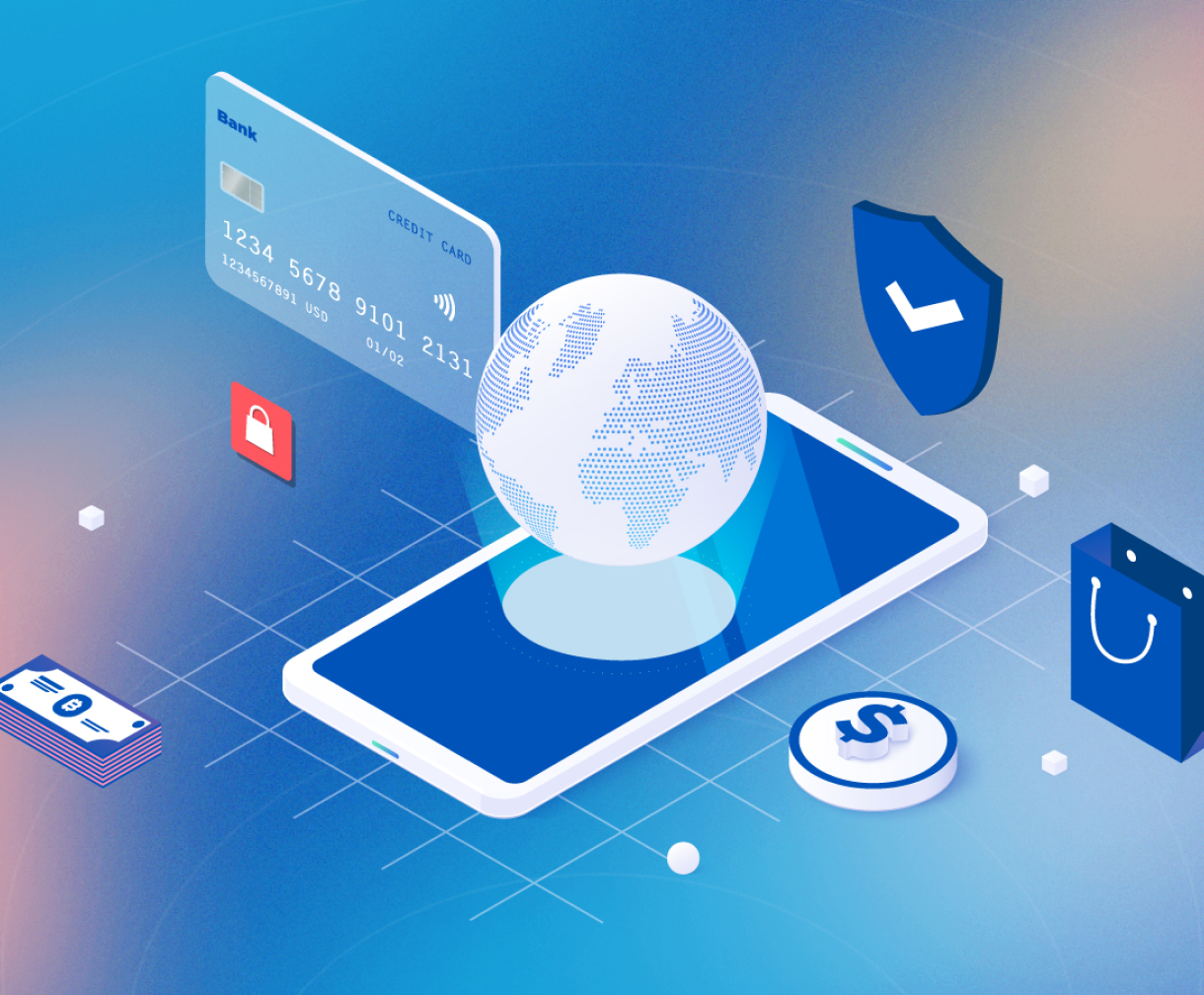What is a Payment Facilitator? ( PayFac ) | Complete Guide | inai
Payment facilitation (PayFac) is an emerging modelfor managing transactions between buyers and sellers. Unfortunately, it wasn't a feasible option for smaller merchants, despite being released in 1990.

Table of content
Technological progress has reduced the complexities and costs of using PayFac for merchants. Today, merchants can easily create a sub-merchant account under PayFac and accept online and card payments. Let's investigate how PayFac works and how they manage to make this complex process easier for their clients.
What is a Payment Facilitator?
A payment facilitator is an intermediary entity between merchants and their bank accounts, facilitating the process of receiving consumer money. In this digital world, it is hard for small and medium-sized merchants to account for all the payment methods to ensure the payments are secure and not subject to any problems.
Merchants can open a sub-merchant account under a PayFac; this sub-merchant account holder handles all the responsibilities of managing the funds' transfer to and from various entities. Various gateways and banks have made it difficult for merchants to connect with payment options available in the market. PayFacs handle all complex problems, including security, analytics, billing, connecting with the respective banks, and payment gateways.
PayFacs take care of a merchant's responsibilities and the lengthy, tedious process of creating and handling a merchant account. Merchants don't have to connect directly with the acquiring banks and payment gateways, making the process smoother. Earlier, these merchants could only operate within physical stores, with cash being their only payment method. However, with the advent of PayFacs, merchants can work from a store and online marketplaces without worrying about payment methods.
Common Types of Platforms and Marketplaces
.png)
1. E-commerce
Merchants and buyers interact on an eCommerce platform to sell and buy products. In such an arrangement, a buyer can see the products or services, and the seller sells and places an order to purchase the product online. This interaction happens via a mobile app or a website. Ecommerce helps merchants manage cross-border trade with utmost ease. Today, the various trade channels aren't limited to the physical store, as merchants can sell them from any part of the world.
Some examples of leading e-commerce platforms include the likes of Shopify, woo-commerce, Amazon, and eBay.
2. Invoicing
Invoicing platforms help people track their finances. In addition, such software manages the process of billing merchants for their products and services. Additionally, with the help of financial analytics and detailed sales reports, merchants can get an insight into their business activities.
Some leading invoicing platforms include Scoro, Quickbooks, and Freshbooks.
3. Retail
Retailing is one of the oldest methods of buying and selling products and services. The seller sells its products in a shop or a marketplace. The buyer goes to the shop and buys the product. Earlier, all these transactions took place in exchange for cash; however, the arrival of card technologies and digital payment systems have modernized the payment methods
Nowadays all retailers, whether big or small, accept online and card payments.
4. Travel and Ticketing
Travel and Ticketing are some of the best consumer-based industries in the market. Online travel marketplaces are seeing a recent boom as people begin to travel, from online bookings to flights to accommodations. With a few clicks, people are booking their preferred hotel accommodation and flight tickets while making other specialized arrangements, all without stepping out of their houses.
5. On-Demand Service
Services like grocery shopping, taxi rides, and restaurant delivery are all examples of on-demand services. Some examples of on-demand service platforms include Uber, Lyft, and InstaCart.
6. Booking
As a software solution, a booking system helps potential customers book a business's services online. Customers can book hotel rooms, movie tickets, or other amenities using the business website or other booking platforms like Cloudbeds and Fareharbor.
What is Involved in the Payment Facilitator Ecosystem?
A series of policies and procedures are involved in transferring money from the consumer's account to the merchant's account. In this ecosystem, different intermediary parties play different roles in ensuring the security and credibility of the parties giving and receiving the funds.
The major components of the payment facilitator ecosystem are-
.png)
1) Acquiring banks
The acquiring bank is the first link within the payment facilitator ecosystem. To receive and transfer funds, PayFac needs a merchant account. A PayFac opens a merchant account at an acquiring bank that connects with various card networks like MasterCard and Visa. PayFacs can't directly connect with card networks; for this reason, the acquiring bank acts as an intermediary between the card networks and the PayFac. Moreover, An acquiring bank prohibits processing translations for the sub-merchants, especially if the merchant engages in suspicious activities.
An acquiring bank is responsible for the activities of a PayFac. Hence, the acquiring bank needs to ensure the legitimacy of the PayFac. It ensures the PayFac entity follows all the rules and guidelines laid down by the card networks to adhere to the bank policies. A PayFac must pass through all the requirements of an acquiring bank before becoming a PayFac. These requirements revolve around risk management, fund settlements, underwriting procedures, and policies.
2) Payment Facilitator
The payment facilitator is a critical component of this ecosystem. It acts as a mediator between the bank and the merchants. The payment facilitator is responsible for handling all the transaction's complexities along with clients' credentials.
PayFacs must comply with all the rules and guidelines laid down by the card networks, banks, and government bodies to ensure a secure payment ecosystem.
However, PayFacs acquire clients at their own risk, which makes them directly responsible for their customers. This responsibility includes taking the onus of the financial activities through its unique platform to earmark any potential consumer harm. From verifying the identity and legitimacy of their clients to the process of chargebacks and ensuring a safe payment process, PayFacs own everything.
3) Sub-merchant
Sub-merchants are the actual merchants in the payment facilitator ecosystem. In the traditional acquiring system, sub-merchants are merchants, and these people directly connect with the acquiring banks to create merchant accounts and manage payment methods. However, under the PayFac model, sub-merchants do not directly reason with acquiring banks. Instead, they agree on the payment terms with PayFacs, which liaises with the acquiring banks.
These platforms don't have their merchant accounts; alternatively, their account comes under the merchant account of the PayFac, which handles all the transactions on their behalf and the complexities that come with the transaction processes.
4) Payment Processors
Payment processors are responsible for creating a hassle-free and time-efficient process to transfer funds from one account to another. Various transactions occur between the merchant and the consumer during the entire process. They are the primary communicators between the buyer's bank account and the merchant's account. Payment processors check the purchasing and selling entity accounts for fraudulent activities to ensure a smooth transfer into the respective accounts.
The money must be safely credited from the consumer's bank and debited to the merchant's bank in a time-efficient manner. No matter the nature of the payment, all transactions need to be authorized by the processor to certify they are legitimate.
5) Sponsors
Sponsors are acquiring entities that provide services to acquiring banks and payment processors. They are members of card associations, as they handle the process of transferring funds on behalf of credit/debit facilities. A PayFac agency can get into an agreement with a sponsor instead of individually signing contracts with the acquiring bank and the payment processor.
How Do PayFacs (Payment Facilitators) Work?
PayFacs must go through a long process before starting their work. They must establish a merchant account, and connect with payment processors/sponsors, to ensure their clients meet all the KYC regulations. Their primary responsibility is to create a system to monitor transactions for a smoother experience for merchants and buyers.
PayFacs ensure that its business follows the highest security standards to comply with anti-money laundering and other guidelines set by the government and card networks. They are a significant link between the consumers and the client's accounts. When a consumer purchases a marketplace, the funds move from various processes through the payment processors, ensuring the parties engaged in the transactions are legit.
After receiving the funds, the PayFacs transfer the funds to the sub-merchant accounts following a lock-in period. A PayFac takes care of any errors occurring during the payments or any chargebacks issued by the issuing bank.
Traditional Acquiring vs. Payment Facilitator
With the advent of online marketplaces and new advancements in payment methods, there has been a shift in payment methods and the procedures involved in transaction handling. In traditional acquiring, merchants were in direct contact with the acquiring bank. They had to go through the strenuous and time-consuming procedure of creating their bank accounts and managing the funds.
They received a merchant ID to transfer funds directly from the consumer's bank account to their merchant account. Merchants had to settle all the problems within the payment process. In the case of chargebacks, they had to go through the process of submitting identity verification documents.
In the payment facilitator method, payment facilitators act as mediators between the acquiring bank and the merchant. Merchants create a sub-merchant account under a PayFac. All the funds are transferred from the consumer account to the PayFac merchant account and then transferred to the merchant's account. It is a fast and painless process for merchants. They don't have to worry about various rules and regulations for payment procedures and can easily maintain their funds with the help of PayFacs.
What is the Function of a Payment Facilitator?
1) Underwriting and Onboarding
A payment facilitator's first and foremost task is to get good quality and legit clients. PayFacs must check their clients' creditworthiness to ensure they sell worthy goods and do not engage in criminal or terrorist funding activities. In short, they are legitimate and authentic entities. Underwriting and onboarding are essential to reduce the risk of getting faulty clients and improving client quality using their platform.
PayFac entities must ensure the merchant complies with all the underwriting checks required by the acquirers. There are some guidelines that PayFacs follow to ensure the credibility of their clients. Firstly, they follow the Know Your Customer (KYC) procedure. This process ensures the tax id of the merchant is valid and issued by a government entity.
After that, PayFac must check the status of the entities and whether they exist on the MATCH (Member Alert to Control High-Risk Merchants) list.
The list contains the names of other acquirers' terminated people, and the PF needs to be aware of these people. That person on this list will likely get rejected. Finally, the check must ensure that the business owners and businesses are not on the US Office of Foreign Asset Control list. It ensures that the entity is not linked to criminal and terrorist activities.
2) Transaction Monitoring
Transaction monitoring monitors client activities like deposits, withdrawals, and transfers. Even after clearing a client for valid transactions, payment facilitators must ensure they are not breaching any rules laid down by card networks, acquiring banks, and government entities.
A PayFac is responsible for its clients, and PayFacs must check the behavior of their clients. Therefore, most PayFacs use a combination of human experts, technologies, and predefined policies and procedures to track anomalies and report suspicious sub-merchant behavior. Some red flags for a PayFac system include high volume chargebacks, questionable transactions, and activities from suspicious buyers.
3) Merchant Funding
Once a PayFac has transferred money to its merchant account, the next task is to transfer the funds to its clients' accounts. A PayFac must record all their clients' transactions, track the payments, and ensure that the clients receive their funds in a timely manner.
4) Chargeback Management
The role of a PayFac is quite risky since it deals with all the problems between the transaction processes, as an integral problem is chargeback management. A chargeback happens when the client refuses to acknowledge the payment after being processed. The traditional method to resolve this issue is that the merchant must submit the documents to the issuing bank to show the merchant's credibility.
But in the PayFac method, as PayFac represents the merchants, it is their responsibility to complete this process and prove that their clients are not engaging in any illegal activity.
Conclusion
PayFacs have made the life of merchants easier. Now, merchants don't have to worry about going through the laborious process of establishing a merchant account and resolving transactional issues. Previously, the payment facilitation process was affordable only for big companies that could afford the cost of setting and managing this process. However, this model is readily available to small and medium-size merchants at inexpensive expenses with technological advancement.
PayFacs, as intermediaries, handle all the intricacies on behalf of the merchants. They provide a software solution to merchants that makes them handle all the transactional processes. They create a platform that interacts with the acquiring banks and payment processors to create a smooth fund transfer link between the buyer and the seller.
They follow high-security standards to comply with the guidelines to ensure that the buyers and sellers are both authentic entities and their data is not compromised in this process.







Let’s get started








.png?width=123&height=71&name=inai%20logo%20-%20dark%201(1).png)